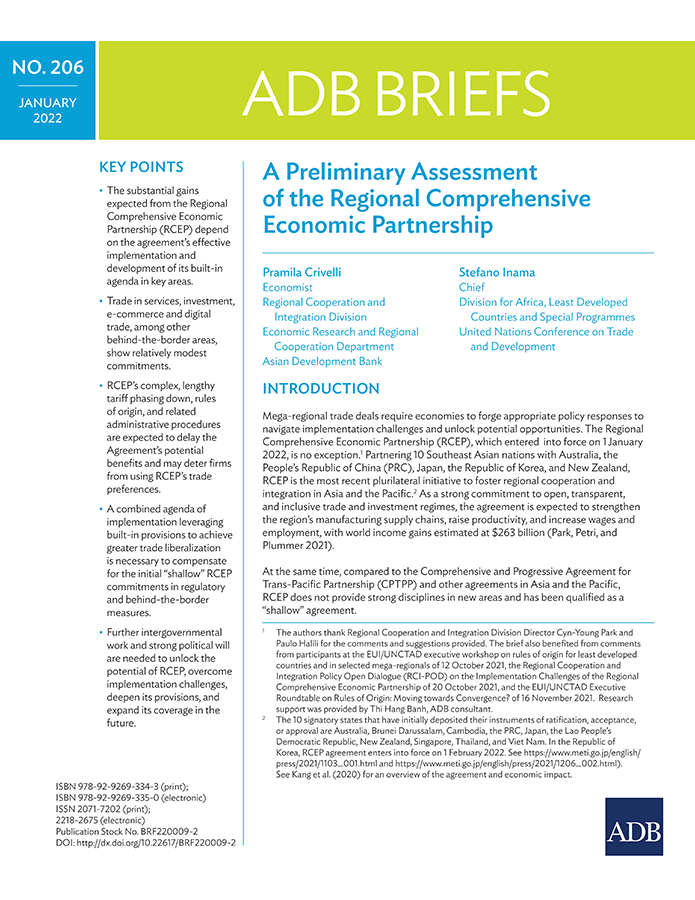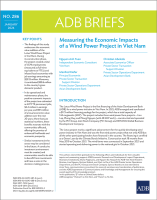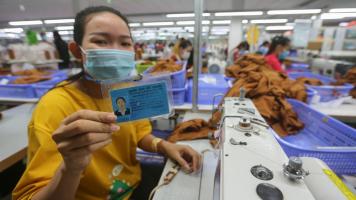A Preliminary Assessment of the Regional Comprehensive Economic Partnership
This brief discusses the potential benefits of the Regional Comprehensive Economic Partnership agreement and provides recommendations on how to maximize its potential.
The Regional Comprehensive Economic Partnership (RCEP), which entered into force on 1 January 2022, is the most recent plurilateral initiative to foster regional cooperation and integration in Asia and the Pacific. It involves the 10 Southeast Asian nations, plus Australia, the People’s Republic of China (PRC), Japan, the Republic of Korea, and New Zealand.
RCEP relies on a combined agenda of implementation and built-in provisions to achieve greater trade liberalization (known as the ASEAN Way) rather than firm commitments adopted at the outset and contained in the original text, as in the Comprehensive and Progressive Agreement for Trans-Pacific Partnership. As such, RCEP needs to prove its value added to firms and investors relative to the existing network of free trade agreements that will continue to be in place and may further develop.
This brief discusses the potential benefits of RCEP and provides recommendations on how to maximize its potential.
Contents
- Introduction
- The Regional Comprehensive Economic Partnership in the Regional Trade Landscape
- Analysis of Commitments in Regional Comprehensive Economic Partnership Regulatory and Behind-the-Borders Chapters
- Making the Regional Comprehensive Economic Partnership Immediately Attractive—an Initial Assessment of Tariff Reductions and Rules of Origin
- Brining Forward Regional Comprehensive Economic Partnership Implementation and Build-in Agenda—Issues Identified and Policy Recommendations
Published January 2022.


